What started off in 1994 as a humble distribution transformer repair unit has today grown into Shirdi Sai Electricals Ltd Group (SSEL Group) — a respectable name in the field of transformers that includes Shirdi Sai Electricals Ltd and its subsidiary Indo-Tech Transformers Ltd. In this exclusive interaction, we have Visweswara Reddy, Chairman & Managing Director, Shirdi Sai Electricals Ltd Group (SSEL Group), discussing the group’s three-decade journey and its future plans. Reddy asserts that SSEL Group aims to solidify its leadership in the power T&D sector by leveraging advanced technologies and maintaining high-quality standards.
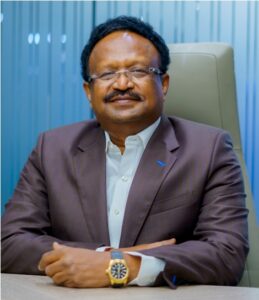
Let us start by understanding the range of distribution transformers produced by SSEL.
At its core, SSEL Group is committed to providing smart, sustainable, and efficient solutions for the energy sector. SSEL Group is India’s largest distribution transformer manufacturer. We have established ourselves as a one-stop solution for energy transmission and distribution (T&D) needs. SSEL Group currently has the capability to manufacture a wide range of products for the transmission segment, including the most energy-efficient transformers ranging from 5kVA to 500 MVA in the 400kV class, as well as reactors up to 125 MVAr.
What is SSEL’s current annual manufacturing capacity in MVA terms, with respect to distribution transformers? Is there any medium-term capacity expansion plan?
Our integrated facilities across India leverage state-of-the-art technology to manufacture a diverse range of transformers. With a total annual production capacity of 35,000 MVA spread across three plants, we are well-equipped to meet a variety of power and distribution needs.
Our first manufacturing facility in Kadapa, Andhra Pradesh, dedicated to manufacturing distribution transformers, currently has installed capacity of 7,500 MVA. This facility excels with cutting-edge technology, allowing us to produce 400-450 transformers daily. By the end of 2024, we plan to expand the Kadapa plant’s capacity to 15,000 MVA, focusing on medium power and dry-type transformers.
Our second facility, located in Naini, Uttar Pradesh, has installed capacity of 20,000 MVA and is our largest manufacturing plant. We aim to expand its capacity to 25,000 MVA annually by the end of 2024.
In Kanchipuram, Tamil Nadu, our listed company Indo Tech Transformers Ltd has an installed capacity of 7,500 MVA. This plant will see an increase in capacity to 10,000 MVA by the end of 2024.
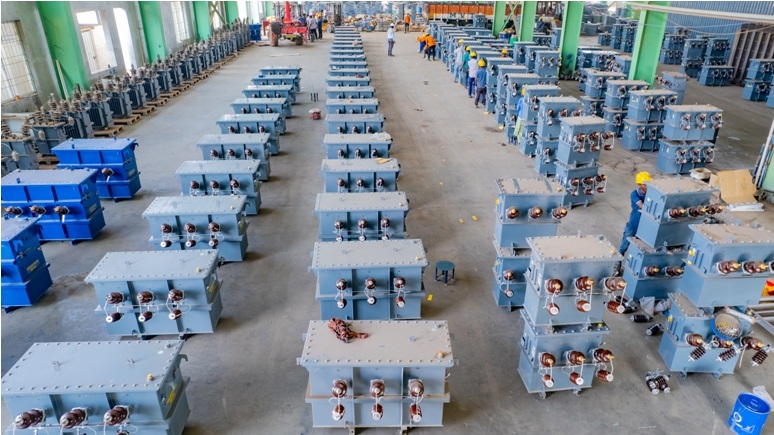
SSEL acquired Indo Tech Transformers in around 2020. How has this acquisition expanded SSEL’s product range, capacity and market penetration?
Yes, in 2020, we acquired Indo Tech Transformers Ltd, a publicly listed company based in Kanchipuram, Tamil Nadu, from Prolec-GE. Following this acquisition, SSEL Group significantly expanded its transformer production capabilities, enhancing our range from 66kV to 220kV. In 2022, we further strengthened our position by acquiring the Naini plant in Allahabad, Uttar Pradesh, from GE. This acquisition enabled us to broaden our product range to include transformers up to the 400kV class and 500 MVA. These strategic moves have not only allowed us to produce a comprehensive range of transformer classes and capacities within India but have also significantly increased our market penetration, enabling us to efficiently meet regular demand.
We understand that SSEL has gained expertise in mass production of distribution transformers through backward integration and high-level automation. Please elaborate.
At SSEL Group, our expertise in the mass production of distribution transformers is rooted in our unwavering commitment to backward integration and advanced automation. By meticulously controlling our supply chain, enforcing stringent quality standards, and employing state-of-the-art automation technologies, we deliver highly reliable, top-quality transformers that meet a wide range of customer requirements. Our backward integration approach involves processing our conductors, aluminium, electrical steel, and transformer tanks in-house, which enhances quality, optimizes costs, and ensures timely delivery. Additionally, our significant investment in automation over the years has bolstered our success and strengthened our reputation in the market.
How do you see the demand for dry-type transformers given India’s rapid urbanization? Does SSEL plan to make such transformers? What about “green” transformers that use natural ester oils in place of mineral oil?
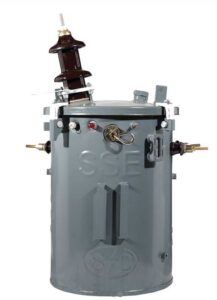 The demand for dry-type transformers is increasing due to rapid urbanization; they offer a safer, more convenient and environmentally-friendly solution. They require low maintenance, produce less noise, feature enhanced safety, and have improved fire resistance. These advantages have led to rising demand from various sectors, including malls and corporate facilities.
The demand for dry-type transformers is increasing due to rapid urbanization; they offer a safer, more convenient and environmentally-friendly solution. They require low maintenance, produce less noise, feature enhanced safety, and have improved fire resistance. These advantages have led to rising demand from various sectors, including malls and corporate facilities.
We are planning to manufacture dry-type transformers at our SSEL Group’s Kadapa plant. The installation work is underway, and we expect to commence production by the end of 2024.
Currently, we are focused on producing environment-friendly transformers. We avoid using fossil fuels and instead utilize ester oil, which is a more sustainable option. This aligns with our commitment to green technology and reducing our environmental footprint.
SSEL, as we understand, as supplied over 4 lakh distribution transformers to power utilities. Do you see any improvement in procurement policies of state government utilities over the years?
In fact, we have supplied over 6,00,000 distribution transformers across the globe. In response to evolving needs, state government utilities have significantly enhanced their procurement policies over the years. These advancements in procurement reflect a commitment to improving efficiency, transparency, and accountability, ultimately strengthening the reliability of power distribution infrastructure.
Do you perceive significant difference between private and government distribution utilities, especially with respect to procurement policies?
No, in both private and government utilities; the procurement policy has no significant difference; they are aligned with one another. Some utilities are implementing reverse action strategies.
Speaking of industry issues, it is said that the failure rate of distribution transformers in India is the highest in the world. What could be possible reasons? Do you think the L1 procurement policy of state utilities is responsible to some extent?
The high failure rate of distribution transformers in India can be attributed to several factors— poor transformer quality, network quality, and harsh operational conditions. The “L1” procurement policy, which prioritizes the lowest bid, can contribute to the issue of encouraging the use of cheaper, lower-quality transformers. This cost-driven approach often compromises long-term reliability and performance. To improve the situation, it is essential to focus on better quality control, revise procurement practices to prioritize durability and value while investing in upgrading network infrastructure and maintenance.
There has been much debate of use of inferior/scrap CRGO in Indian transformers. It is now officially mandatory to use BIS-certified CRGO. What is your overall view on the CRGO issue?
The country has taken steps to mitigate the impact of scrap CRGO (cold rolled grain oriented) licenses; however, some individuals in this sector are still finding ways to import by manipulating HSN (Harmonized System Nomenclature) codes. From an industry perspective, we need to address this issue.
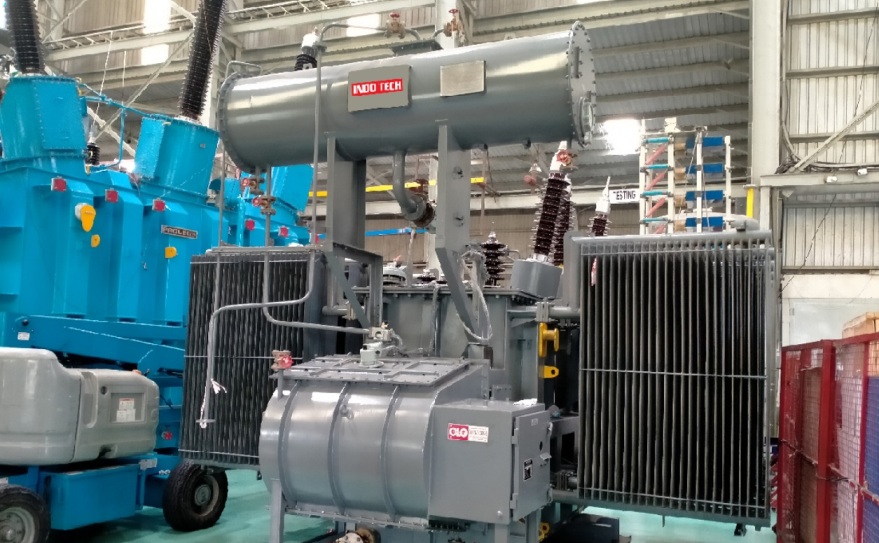
We understand that distribution transformers need certification from BIS as well as BEE. What is your take on this dual certification process?
From an industry perspective, the dual certification process for distribution transformers—both BIS (Bureau of Indian Standards) and BEE (Bureau of Energy Efficiency)—can be seen as both a challenge and an opportunity. Meeting BIS and BEE requirements ensures smoother market entry and compliance with national regulations while aligning with global standards for easier international expansion.
How do you rate the demand for transformers arising from the Revamped Distribution Sector Scheme (RDSS) that envisages significant distribution infrastructure upgrade?
The RDSS scheme, launched by the Indian government in July 2021, aims to transform the electricity distribution sector by enhancing power supply quality, reliability, and affordability, while reducing AT&C losses to 12-15 per cent by 2024-25. This initiative is expected to drive the annual growth in transformer demand by 8 per cent and increase transformer capacity by 16 lakh MVA, up to 66kV, by 2030. Overall, RDSS will significantly boost transformer demand in India through its infrastructure upgrades and performance improvements.
SSEL started as a transformer repair unit and now has grown into a respected name in the field of transformers. How do you see the years ahead for SSEL, with respect to the distribution transformer business? What would you regard as your main business growth drivers?
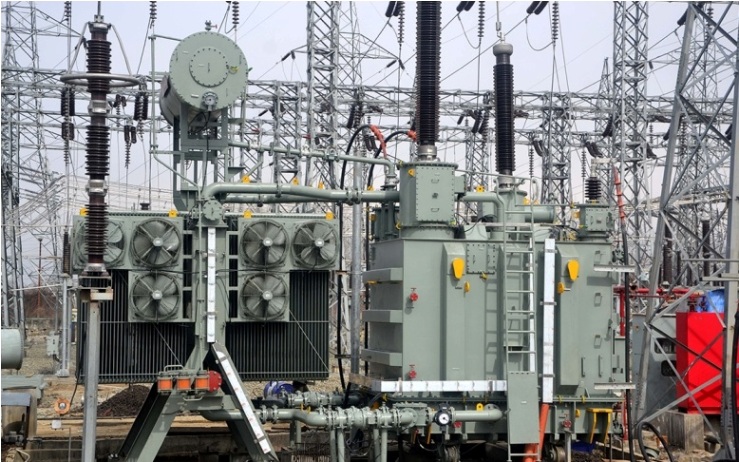 Founded in 1994 as a transformer repair unit in Kadapa, Andhra Pradesh, SSEL Group boasts of a 30-year legacy and now supplies products to over 40 countries, including the USA, UK, Australia, Italy, and Finland, with 6 lakh transformers installed globally.
Founded in 1994 as a transformer repair unit in Kadapa, Andhra Pradesh, SSEL Group boasts of a 30-year legacy and now supplies products to over 40 countries, including the USA, UK, Australia, Italy, and Finland, with 6 lakh transformers installed globally.
We aim to solidify our leadership in the power T&D sector by leveraging advanced technologies, expanding into emerging markets, and maintaining high-quality standards. Our efforts have been recognized with the National Energy Conservation Award in 2015 from the Government of India for our BEE Star-labeled distribution transformers.
More recently, in 2022, SSEL was honoured with the National Energy Conservation Award by the Bureau of Energy Efficiency in the distribution transformer category, presented by Hon’ble President of India.
Our vision is to be a global one-stop solution for generation to distribution through diversification, innovation, and collaboration. By focusing on these strategies, SSEL Group’s transformer business is well-positioned to thrive and continue its legacy of excellence.
All industrial photographs seen in this interview relate to products and manufacturing facilities of SSEL Group.


